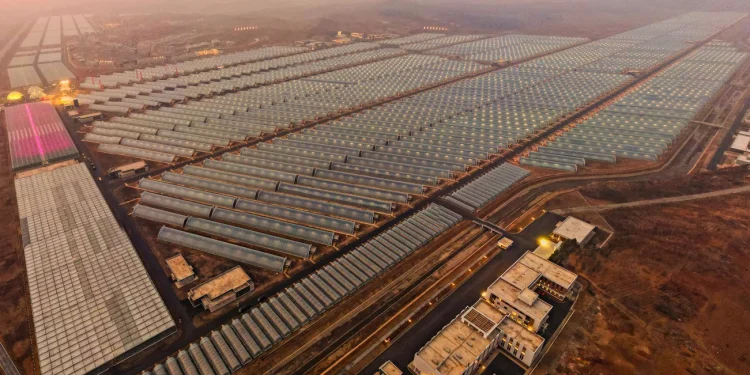According to a recent analysis of satellite data, the global area covered by greenhouses has increased 43 times over the past 40 years, now occupying over 13,000 square kilometers compared to just 300 square kilometers four decades ago. This substantial growth is reported by AgroTimes, citing material from Earth Observatory.
The most significant expansion has occurred in China, which now hosts 60% of the world’s greenhouses. These structures are predominantly concentrated on the North China Plain, with the largest cluster found in Shandong province, covering over 820 square kilometers.
Chinese greenhouses primarily cultivate cucumbers, eggplants, and tomatoes. Additionally, there is a growing trend of planting high-value berries and fruits such as strawberries, grapes, kiwi, and pitahaya in controlled environments.
Read also: The Decline of Greenhouse Areas in the Netherlands
Between 1990 and 2020, China’s overall production of tomatoes and cucumbers increased sixfold, although export levels have remained relatively stable.
Researchers from the University of Copenhagen utilized Landsat imagery to determine the inception year of greenhouse construction in each of the 65 largest greenhouse clusters. They tracked changes in these clusters between 1985 and 2021 across the five countries with the most extensive greenhouse areas: Weifang, China; Almería, Spain; Bari, Italy; Antalya, Turkey; and Chapala, Mexico.
“The growth rate is highest in China, but this is a global phenomenon,” said Xiao’e Tong, a scientist at the University of Copenhagen and the study’s lead author.
The researchers mapped greenhouses in 119 countries, identifying Spain (5.6% of global greenhouse area), Italy (4.1%), Mexico (3.3%), Turkey (2.4%), Morocco (2.3%), South Korea (1.8%), Japan (1.7%), the Netherlands (1.4%), and France (1.3%) as key contributors.
They also mapped greenhouses in 22 African countries, where these structures are predominantly used for producing vegetables and flowers.










